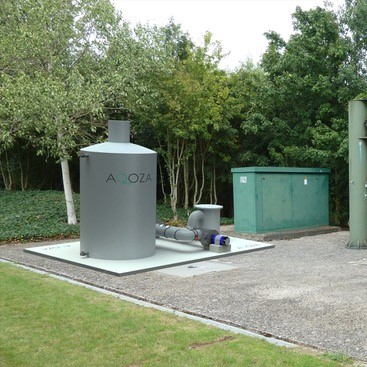Effective Odour Control in Wastewater Treatment: A Critical Step Toward Sustainable Solutions

Wastewater treatment facilities play a crucial role in managing and purifying water before it's released back into the environment. However, one common challenge that these facilities face is controlling the unpleasant odour in wastewater treatment processes. These odours are typically caused by the breakdown of organic matter, the presence of hydrogen sulfide, and other volatile organic compounds (VOCs). As urban areas expand and wastewater treatment becomes more critical, addressing odour control in wastewater treatment has become a priority for environmental health, community satisfaction, and regulatory compliance.
The Importance of Odour Control
The management of odour control in wastewater treatment plants is vital not only for operational efficiency but also for community relations. If left unaddressed, strong and persistent odours can negatively affect the surrounding neighborhoods, leading to complaints and a decline in local quality of life. Furthermore, ineffective odour control can lead to regulatory violations, impacting the reputation and legal standing of a facility.
Sources of Odour in Wastewater Treatment
The odour in wastewater treatment generally originates during various stages of the treatment process, including:
- Primary Treatment: During this initial phase, solid waste settles, and bacteria begin to break down organic matter, releasing odorous gases.
- Secondary Treatment: In this phase, microorganisms break down dissolved organic matter in aeration tanks, contributing to the production of malodorous compounds, particularly hydrogen sulfide.
- Sludge Handling and Digestion: When biosolids are processed, they produce strong odours, especially if not handled correctly.
- Sewage Pumping Stations: These facilities are crucial in moving wastewater but can also be significant sources of unpleasant smells due to the accumulation of organic matter.
Advanced Solutions for Odour Control in Wastewater Treatment
There are several modern technologies and techniques available for effective odour control in wastewater treatment. Here are some of the most effective solutions:
- Biofiltration Systems: These systems use microorganisms to degrade odorous compounds. Biofilters are highly effective in removing hydrogen sulfide and other malodorous gases. They are eco-friendly, cost-effective, and have a proven track record in wastewater treatment applications.
- Activated Carbon Filters: These filters absorb odorous compounds through physical adsorption. Activated carbon is highly effective at removing volatile organic compounds (VOCs), including the sulfur-based compounds responsible for many unpleasant smells.
- Ozone Treatment: Ozone is a powerful oxidizing agent that neutralizes odorous compounds. Ozone generators are often used in conjunction with other technologies to eliminate stubborn odours in treatment facilities.
- Chemical Scrubbing: This technique uses a chemical solution to neutralize odorous gases, such as hydrogen sulfide. Chemical scrubbers can be tailored to target specific odorous substances, ensuring efficient removal.
Best Practices for Odour Control in Wastewater Treatment
To achieve long-term success in odour control in wastewater treatment, it is essential to implement best practices:
- Regular Monitoring: Consistent measurement of odour levels ensures timely detection of issues.
- Preventive Maintenance: Routine inspection and maintenance of equipment like pumps, filters, and tanks can prevent odour-related problems.
- Public Communication: Transparent communication with nearby communities about odour control efforts fosters goodwill and trust.
Conclusion
Odour control in wastewater treatment is more than just a matter of convenience; it is crucial for maintaining the health, safety, and well-being of communities, as well as ensuring the smooth operation of wastewater facilities. By adopting advanced solutions and best practices, wastewater treatment plants can effectively manage and reduce odour emissions, contributing to a cleaner, healthier environment.
For more information on cutting-edge technologies for odour control in wastewater treatment, visit Aqoza, where we provide comprehensive solutions to manage air quality in industrial and municipal settings.
- Industry
- Art
- Causes
- Crafts
- Dance
- Drinks
- Film
- Fitness
- Food
- Jogos
- Gardening
- Health
- Início
- Literature
- Music
- Networking
- Outro
- Party
- Religion
- Shopping
- Sports
- Theater
- Wellness
- News


